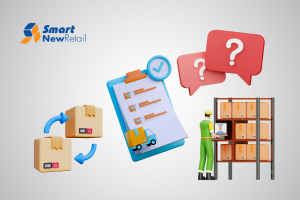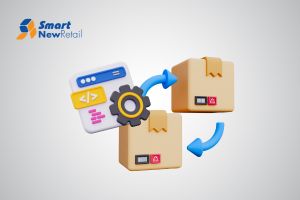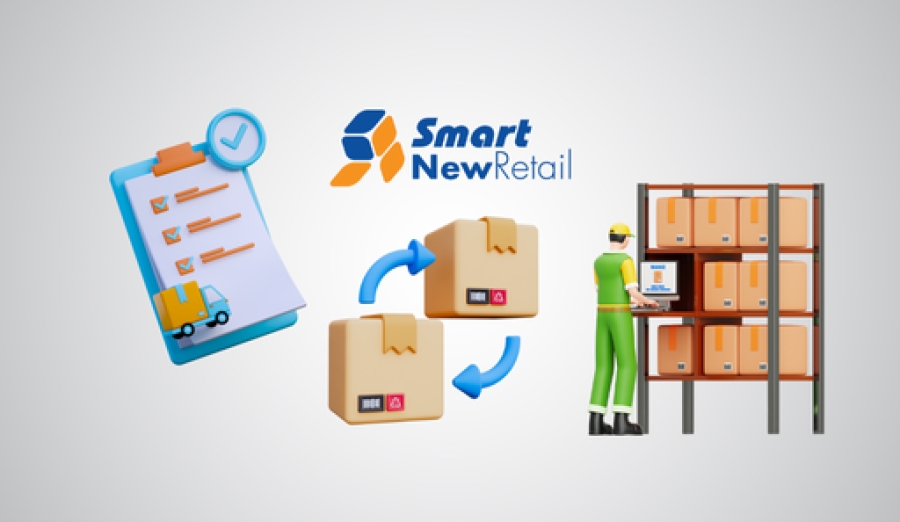Inventory Management System vs. Software: Which One Do You Need?
Managing stock is one of the biggest challenges for any business. It doesn’t matter if you’re running a small corner shop or a mid-sized business with multiple locations you need a way to know what’s in stock, what’s running low and what’s no longer needed.
When managing stock, you’ll often hear two terms which are inventory management system and software. They may sound the same but they’re not. Knowing the difference helps you choose what’s best for your business. In this guide, we’ll explain what each one means, how they work and which one your business might need.
What Is an Inventory Management System?
An inventory management system is the way your business handles stock. It covers everything like people, steps, tools and rules. It helps your team to manage stock from when it comes in to when it goes out.
A proper system should help with:
- Ordering stock
- Receiving deliveries
- Storing items safely and clearly
- Recording sales and usage
- Checking stock levels
- Reordering before items run out
- Removing old or damaged goods
It can be as simple as a stock notebook or as detailed as a fully mapped-out process followed by a team. The key is that it brings structure to your stock handling.
What Is Inventory Management Software?
Inventory management software is a digital tool. It helps you carry out your inventory tasks using a computer, tablet, or phone. Instead of doing everything by hand, software handles the tracking, alerts and reporting for you.
The software is part of your system not the whole system. It supports your process and makes it smoother, quicker and more accurate.
Here’s what good inventory software can help you do:
- Track inventory in real-time
- Spot errors or missing items quickly
- Know exactly when to reorder
- Make better buying choices based on data
- Avoid stock-outs or excess
Think of it as a smart tool that gives you more control over your inventory without extra work.
Inventory System vs Software: The Main Difference
Understanding the difference between an inventory system and inventory software can clear up a lot of confusion. An inventory management system includes everything a business uses to handle stock like people, methods, tools and plans. It’s the full setup used to order, store, track, and use items.
Inventory management software is one part of the system. It’s a digital tool that helps track and manage stock faster and more accurately. It stores item details, updates stock levels, and shows reports in just a few clicks.

You can run a system without software especially in small setups. But when things grow or get busy, software makes a big difference. Think of it like driving. You can use a paper map to find your way, but a sat nav gets you there faster and with fewer mistakes. Software brings that same smart help to inventory management.
Why Businesses Need an Inventory Management System
Every business that holds stock needs a system, no matter how small. Without one, stock gets lost, orders get missed and customers walk away.
Here’s when a proper inventory management system becomes essential:
- Stock is stored in more than one place
- Sales come from both in-store and online
- Staff make regular stock mistakes
- Items are expiring or getting damaged
- It takes too long to count or find items
- Customer complaints are increasing
A good system doesn’t have to be complex. It just needs to be clear, repeatable and easy for everyone to follow.
Why Businesses Move to Inventory Management Software
As a business grows, keeping up with stock manually becomes hard. You might find yourself buried in spreadsheets, sticky notes or repeated stock counts. Mistakes go up and efficiency goes down. That’s when inventory management software can help.
Here’s when software becomes necessary:
- You need livestock updates across locations
- You want to cut time spent on manual tracking
- You need more accurate reports and data
- Your sales and restocks don’t match up
- You want to grow, but current methods hold you back
Software doesn’t replace your system. It supports it. It does the heavy lifting so your team can focus on sales, service, and planning.
What Makes a Good Inventory Management System?
A strong inventory management system does three things well:
1. Tracks Stock Movement Clearly
Every item coming in or going out must be logged. This can be done with paper, spreadsheets or digital tools. The key is that nothing slips through the cracks.
2. Defines Stock Rules
Good systems set rules about how stock is received, stored, picked, packed and recorded. Everyone follows the same method.
3. Provides Reordering Guidance
The system should help you know when and how much to reorder. It prevents shortages or overstock.
A system works best when it’s easy to follow and works for your business size and style.
What Makes Good Inventory Management Software?
The best software supports your system without adding stress. It should be simple, reliable and give you useful data.

Look for these features:
- Real-time tracking
- Clear dashboards or reports
- Easy-to-use interfaces
- Alerts for low or extra stock
- User permissions for staff access
- Options to adjust for business growth
Even small businesses can benefit from basic software that tracks items and alerts you when stock runs low.
When to Choose One Over the Other
Start with a System
If you’re new to inventory control, begin with a clear system. Focus on your process—who does what, when, and how. Use pen and paper or simple spreadsheets. Create a routine your team can follow.
Move to Software When You Outgrow Manual Tools
When you start selling more items or open more locations, software can save time and prevent costly mistakes. It gives you quicker access to data and removes the need for repeated counts and checks.
The Cost of Poor Inventory Management
If you wait too long to improve your inventory process, you could face problems like:
- Money tied up in unsold stock
- Customers are leaving due to delays
- Staff wasting time on manual counts
- Missed chances for better deals from suppliers
A good inventory setup, with or without software, keeps your business lean and ready for growth.
Can We Use Software Without a System?
You can install software without a strong system, but it won’t fix deeper problems. Software is a tool. It only works well if you use it with the right process behind it.

For example, if your team doesn’t record incoming stock properly, software won’t help you avoid shortages. You need the right habits and workflows, not just a digital solution.
Do You Always Need Both?
Most growing businesses will eventually need both a proper system and inventory software. One supports the other.
Here’s a simple rule:
- Use a system to build structure.
- Use software to scale that structure.
Once you have a routine that works, software can help you do it faster, more accurately, and with less effort.
Conclusion
You don’t have to start with expensive tools or fancy tech. What matters is having a clear, working process in place. Start by building your inventory management system. Create routines, assign roles and stay consistent.
Then, when your workload increases or your stock becomes harder to manage then bring in inventory management software. Both have their place. One gives you a strong base while the other helps you grow with fewer risks and more control.
At Smart-Acc, we provide tailored inventory solutions to help you streamline your stock management. Visit us to learn more and take control of your inventory today.
